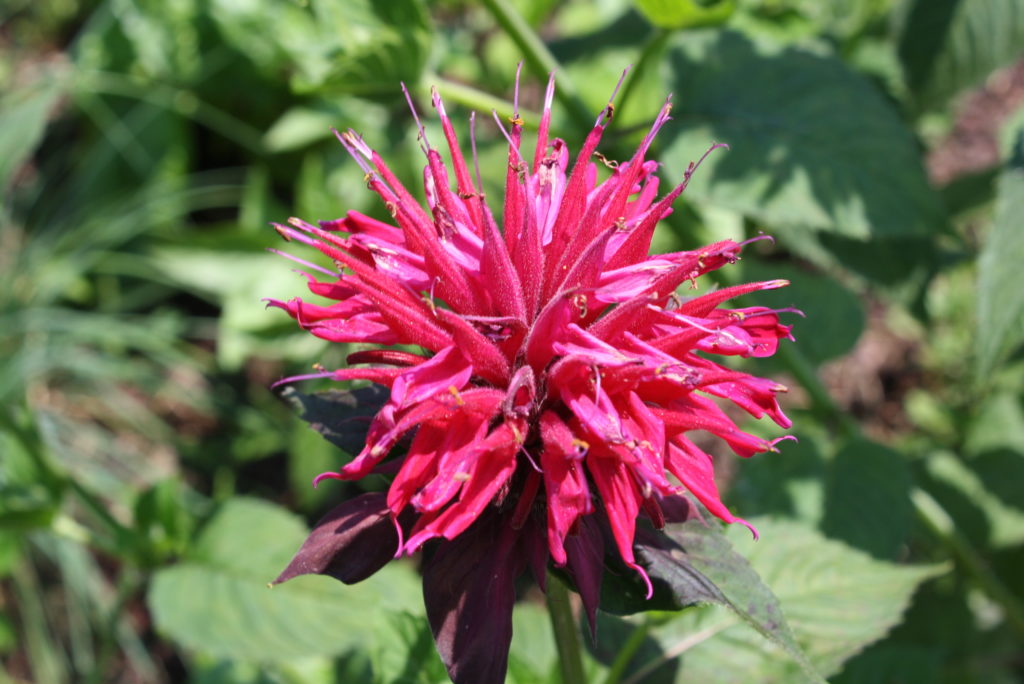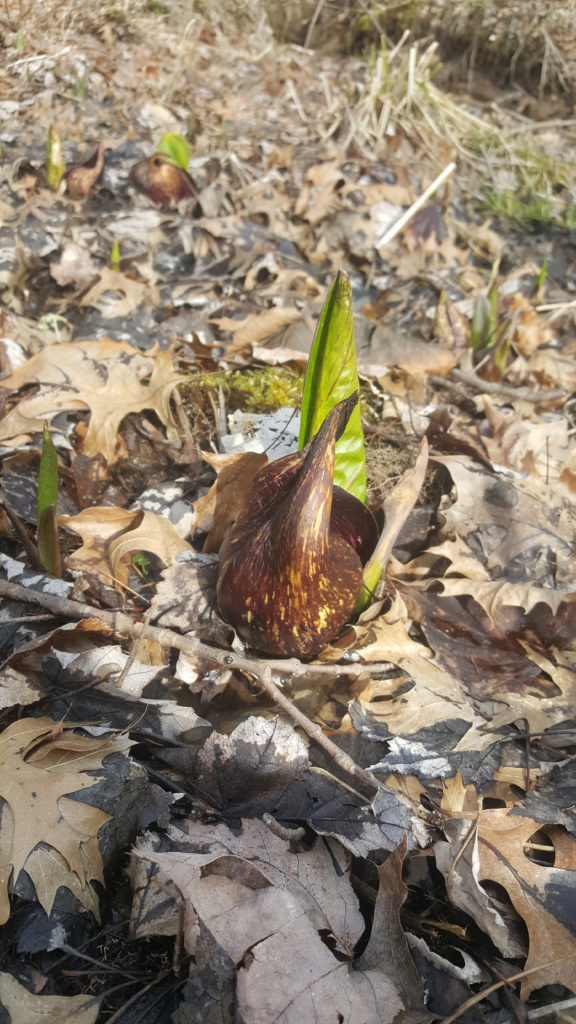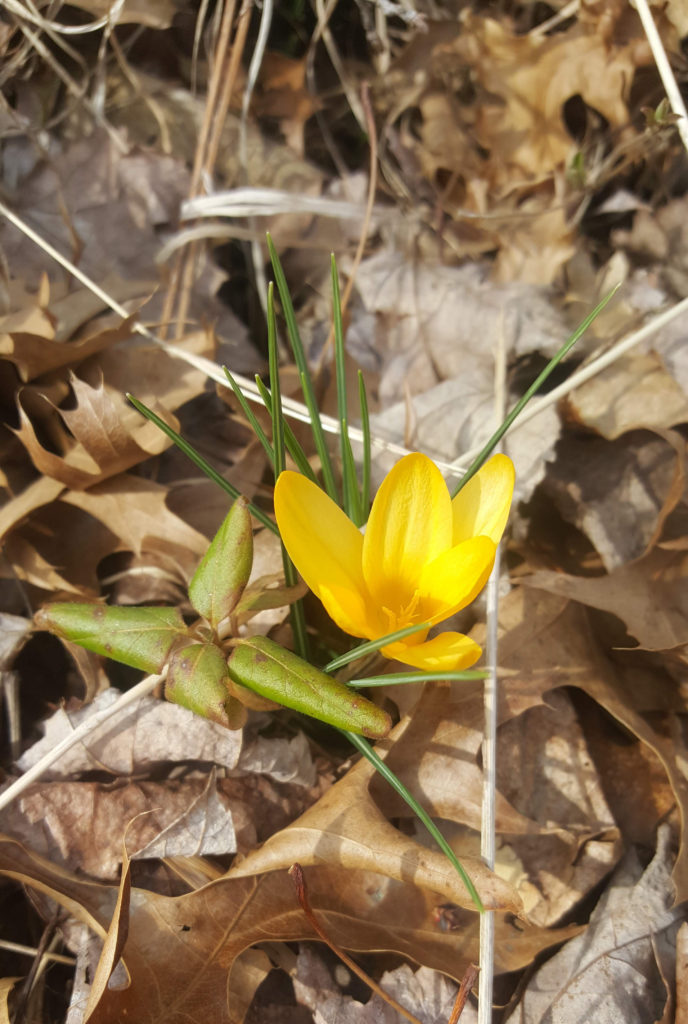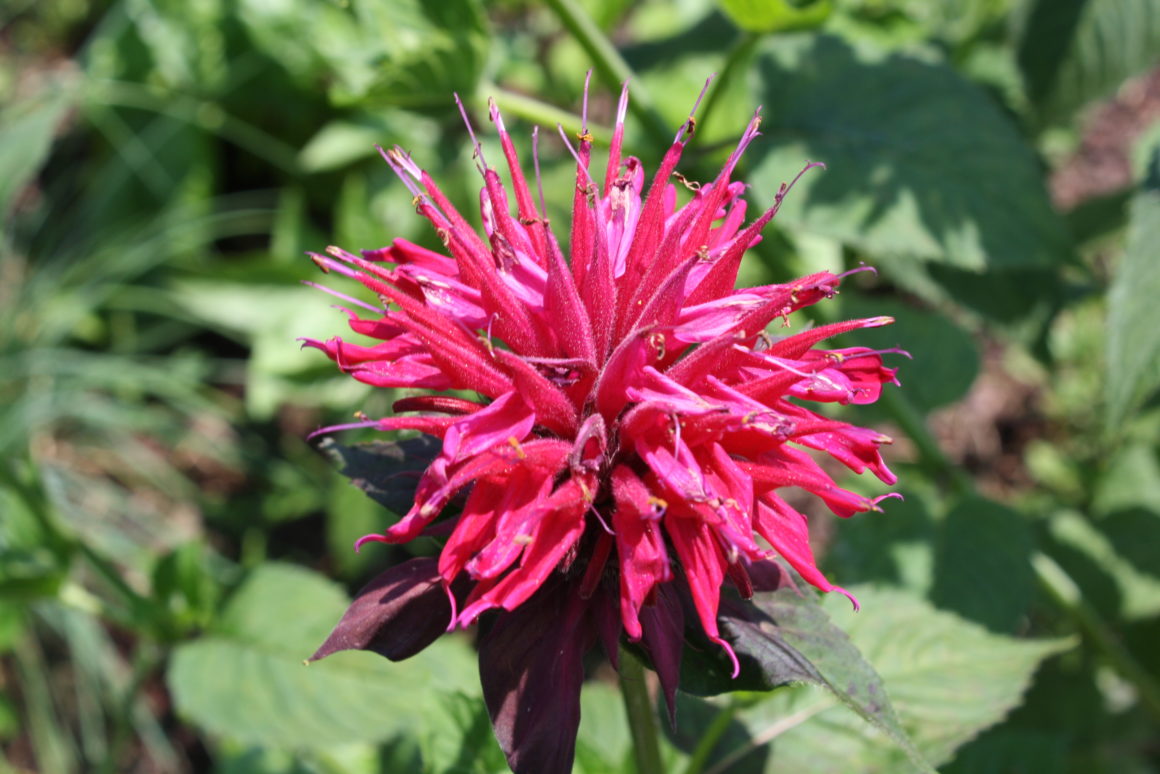
by Sarah Brangwynne
At first the dark purple spikes looked a little ominous poking out of the ground. Soon, they were coming up bulbous and ripe covering the lower part of our yard, around the creek and what we later learned was a vernal pool. This was the first spring in our new home, only two months in and a whole crop was rising. As time went on they bloomed into a field of lush and stunning green.

I learned these impressive plants were skunk cabbage. Yes, ominously named, but a gorgeous harbinger of spring time and moist ground. A whole field of green bloomed and lasted for months. Watching the earth come alive in spring is one of life’s simple pleasures. Every year, no matter how long, cold or dark the winter, spring comes in our beautiful state of New Jersey, the earth wakes and the promise of life abounds.
Being in a new environment and watching nature bloom is like uncovering a hidden treasure. We had no idea what the previous owners planted or what lay dormant in the patches of untouched forest in our backyard. To help identify our plants we asked Mike Van Clef of FoHVOS to come out and walk the property with me. He shared what he saw and made suggestions for what we could plant. We were so excited to discover many native species and found that we had ironwood, spicebush, jack-in-the pulpit, tulip poplar, elderberry and more. We also found a few invasives that we are thinning out such as multiflora rose, honeysuckle and bamboo.
With Mike’s help and the ease of the FoHVOS native plant sale we picked out some plants to add, helping to fill in some of the wet spots in the yard and make it even more inviting for pollinators and wildlife. We are excited to see our order of coral honeysuckle, elderberry, blue flag iris, milkweed, jo pye weed, turtlehead, high bush blueberry, cinnamon fern and a pair of pawpaw trees come alive this spring. We are planning to turn parts of our lawn into a wildflower meadow in the coming years and grateful for the continued advice FoHVOS is offering.

The evolution of a landscape can be slow, but with patience and caring hands lawns can become vibrant habitats and dynamic ecosystems. With some expert knowledge and the right conditions we can give the plants that will sustain our land and animals a home. All of the homeowners in our community have a chance to shape our ecosystem, feed our critters and protect our water supply. Choosing to plant species that support our wildlife, birds, bees, and butterflies is not only beautiful but benefits all of us. Forgo the pesticide and let the dandelion and clover flourish. Discover new medicinal and edibles in your own yard; chickweed, wood sorrel and plantain are nature’s heroes often ignored. Let them feed our bees, and we can all enjoy their sweet nectar come summer.


